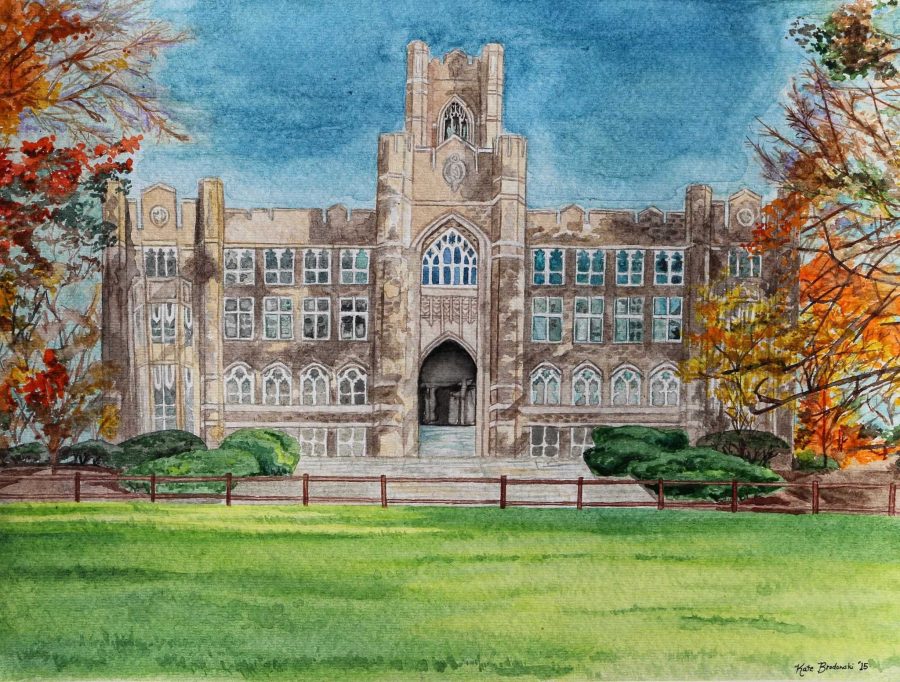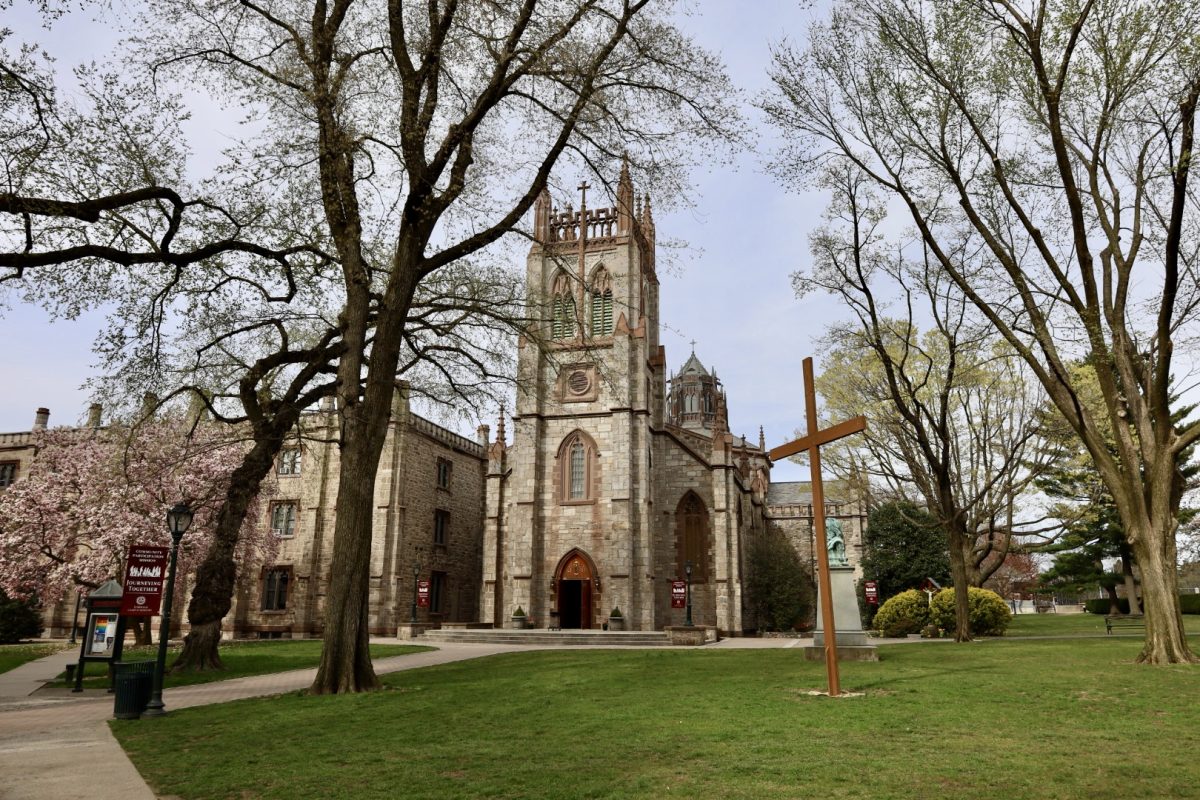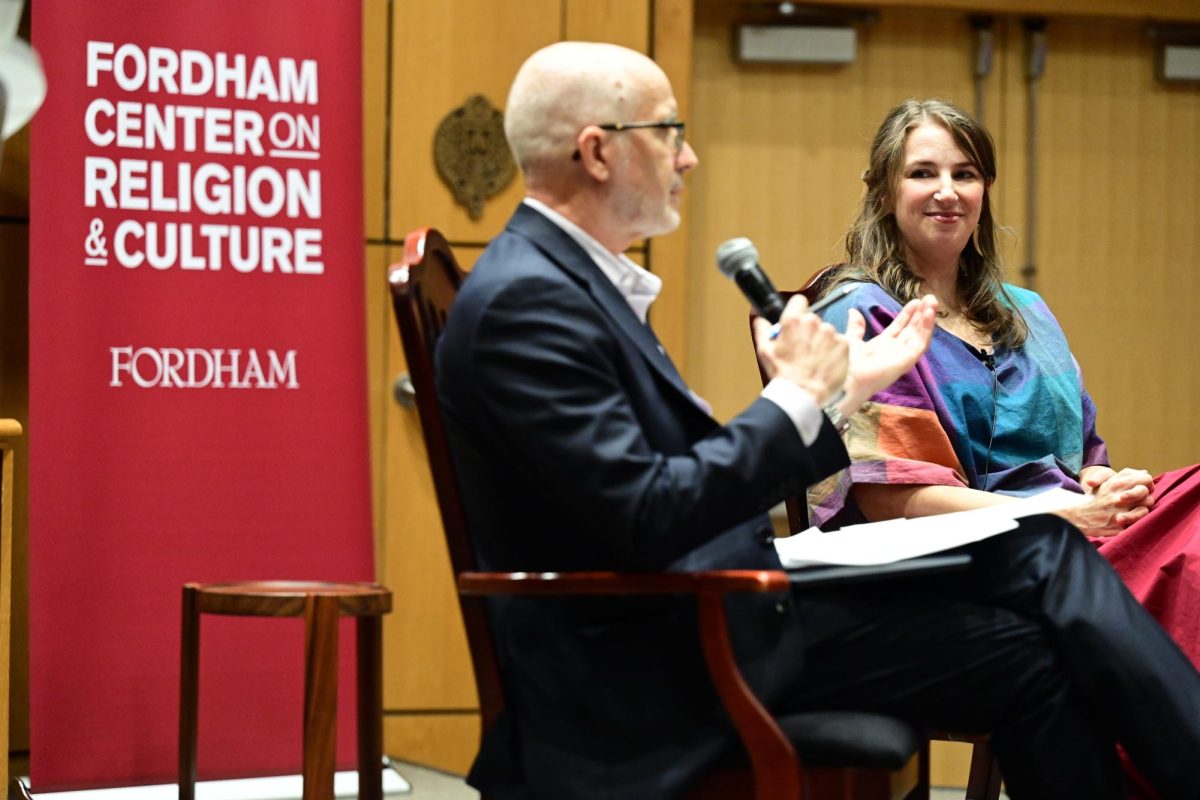By Katie Meyer
At any given time, there could be over a dozen Global Outreach teams operating at Fordham’s two campuses. Eleven programs run in the winter, 13 in the spring and 10 in the summer, and all of these teams are responsible for fundraising at least some of the cost of their trips.
When the programs are in full swing, Global Outreach (GO!) fundraisers pop up like dandelions across campus. Food sales dominate the scene, featuring items that range from baked goods to bacon.
Emily Wilant, Rose Hill’s GO! coordinator, said these food sales generally turn a decent profit.
“These are college students and they don’t want to cook themselves, or they get sick of the cafeteria,” she said. “Anything food, anything comfort food or sweets, is usually a really big hit.”
But, it seems, it is possible to have too much of a good thing. Some students, not content to be one of dozens of teams selling cupcakes outside of Walsh Gate, are deciding not to rely on the old standbys.
Dan Mullen, FCLC ’14, was the leader of Lincoln Center’s GO! West team the summer of his junior year. He said during that trip he decided he and his team could do better than a bake sale.
“I think creativity is key, “ Mullen said. “People like when they hear ideas that aren’t just like a bake sale. I don’t think that bake sales are too effective, though many people would disagree with me.”
Mullen’s team eventually decided to start an apartment cleaning service — more specifically, they started cleaning up after house parties. They charged $30 per cleaning, but Mullen said several people gave them even more. He estimates they made over $300 in the first weekend.
“And then…then it had to stop,” Mullen said.
As it turns out, the party cleaning service was perhaps too creative. When word of the fundraiser got back to the Lincoln Center GO! coordinators, Mullen said he was told it was “probably not the best idea…[because] it promotes ideas and activities that aren’t aligned with Global Outreach.”
“Which totally makes sense,” Mullen added. They shut the operation down, but, he was happy to report, his team was allowed to keep the money.
Luckily, few fundraising ideas, even if they are slightly offbeat, are actually deemed illegal. In fact, many follow the same general formula as the ever-popular bake sales — that is, setting up a table or web page and selling a product. Sometimes, the products are just a little different.
For instance, a current team, GO! San Diego, took an artistic route. They are selling prints of an original painting of Keating Hall, and have drummed up a significant profit by both taking orders for the prints on Facebook and selling them on their Etsy page.
Kate Brodowski, FCRH ’18, came up with the idea. She painted the original artwork with watercolors during Christmas break, and then the team made prints of it. She said the entire process is very cost effective — making the prints is next to free (they use Brodowski’s dad’s professional printer) and sell them for a $5 profit. And, there is a lot of demand.
“I didn’t expect it to get the turnout that it did,” Brodowski said. “It’s funny, there ended up being such an audience for it with graduating seniors and grandparents.”
This business model has proven to work for more than just food and paintings. Teams have turned a profit selling anything from water bottles to t-shirts to Fordham-themed fanny packs. And, the odder the better, it seems, because one of the most lucrative of these ventures, which has worked multiple years in a row, is the ugly sweater sale.
The GO! Glenmary, Kentucky team typically carries out this particular sale. The tradition started a few years ago. The team members take a trip up Fordham Road to Goodwill on half-off day (every Wednesday) and buy up all the cheap Christmas sweaters they can find. Then, they sell them for around $15 per sweater, and students are all for it.
Despite her considerable experience with GO! fundraisers, Wilant was surprised by the amount of interest in used sweaters.
“I had a feeling that would be successful, but I didn’t realize just how much money — I mean they made hundreds of dollars,” she said. “So people are willing to put out a pretty penny for those sweaters, even though they can go to the Salvation Army and get them for much cheaper.”
Andrew Punzo, FCRH ’16, was on the Glenmary team last winter, and said the sweaters made up the majority of his group’s fundraising revenue.
“All the seniors loved them. It was a winter project, so we did it right before Christmas time so everyone’s having ugly sweater parties, and we made a lot of money,” Punzo said. “I think it was close to $1000.”
And perhaps just as importantly, he said it helped to bring his team closer together.
“Just shopping for the sweaters was a lot of fun because you got to try them on, obviously,” he said. “And some of the patterns and things were just ridiculous and horribly ugly. So it was a great team bonding experience.”
Indeed, team bonding is another key part of GO! that teams tend to look for in their fundraising projects. In some cases, that is even more important than making the most money.
Another current project, GO! Guatemala Los Niños, took on this philosophy in a recent fundraiser: for $3, they would tuck students into bed.
“Three bucks a tuck,” Patrick Nally, FCRH ’17, said. “I personally tucked in probably like 9 or 10 people.”
Most of these tuck-ins were ordered by students’ friends as a surprise. Nally said a lot of awkwardness ensued, but his team loved it.
“It was a grand old time,” he said, laughing. “It’s definitely a bonding experience as well as a fundraiser.”
And, they got a lot of stories out of the experience.
“One guy we got at the gym, he was actually on the treadmill. And we had him lay down on that treadmill and I read him Good Night Moon.” Nally said. “We also had a blanket and a teddy bear.”
Awkward? Definitely. Worth it? Nally, for one, says yes. And if he does another GO! project, he knows exactly what fundraiser to suggest.
Photo Courtesy of Kate Brodowski, FCRH ’18.






































































































































































































